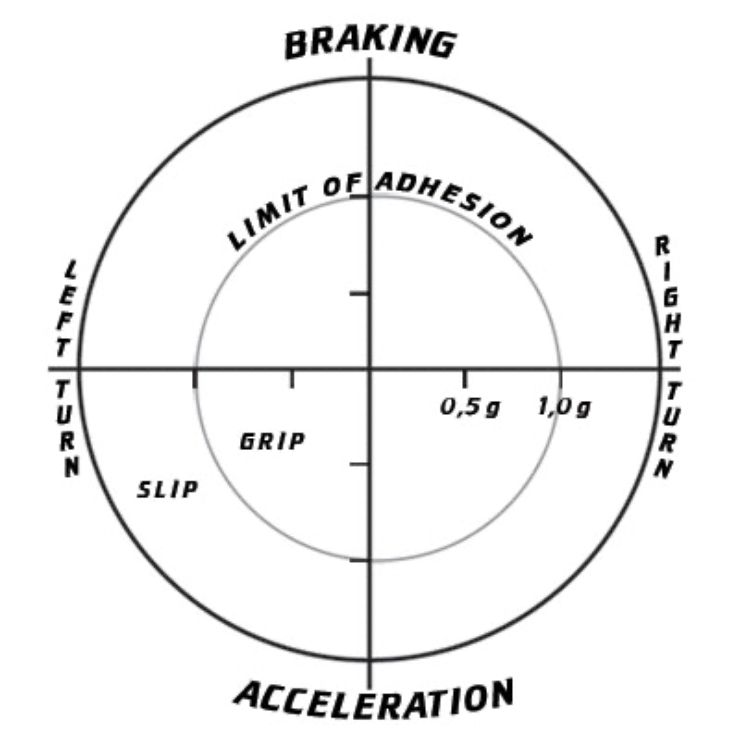Is it possible to brake and turn at the same time while driving?
- December 1, 2022
- 0
Is it permissible to use the brake while driving and turn the steering wheel at the same time, and what problems can the driver face? These questions have
Is it permissible to use the brake while driving and turn the steering wheel at the same time, and what problems can the driver face? These questions have

Let’s start with the fact that during braking, due to the elasticity of the suspension, the weight of the car begins to redistribute to the front wheels. And they begin to cling more tightly to the road. As a result, the load on the contact patch of the tire with the road surface increases. If it is too big, the front wheels will start to slip. And if they are also turned at this time, the load will increase many times, and the car, instead of going to the turning arc, will begin to actively slide out, quickly straightening the trajectory.
Of course, the presence of the ABS system somewhat mitigates the situation, but does not completely eliminate it. It turns out that you can not slow down and turn? No, it’s possible! You simply need to understand the physics of the process.
The fact is that the wheels can only handle a certain load due to a large number of factors. These include the type of road surface, the temperature, the condition of the tire and tread type, the composition of the rubber compound, the turning angle of the wheel. Again, tire temperature. And, of course, the magnitude of the current longitudinal and lateral accelerations.
As a result, for any moment there is a certain limit value of the load, up to which the tire still sticks to the road, and if it is exceeded, it begins to slide.
This was very clearly demonstrated by Professor Wunibald Kamm on his famous circle, the center of which was at the intersection of the X and Y axes, indicating the magnitude of the car’s longitudinal and lateral accelerations. And the circle itself determined the limit to which the wheels could still grip the road.
However, if the braking intensity is slightly less than the maximum allowable value, the driver can turn the steering wheel to an angle where the load on the tire increases and the skidding has not yet started. Therefore, the car will brake and maneuver confidently. In addition, the greater the handlebars are turned, the less braking dynamics we can afford. Accordingly, the more the brake is pressed, the less the steering wheel is turned.
However, driving a car to the point of traction is the fate of athletes. An ordinary driver should understand that when driving with a large speed margin, turning the steering wheel can be combined very well with braking. If the speed of movement is high, it is better to slow down first and only then continue the maneuver.
It is important that this rule works equally well in winter and summer. Only in the warm season can we afford a little more. At least because on the heated asphalt, the transition process from the wheels to the slide is quite smooth and does not lead to a complete loss of controllability. Unlike cold weather, sliding starts quickly and is not accompanied by a characteristic creak of the tire.
In any case, the AvtoVzglyad portal recommends not to exceed the capabilities of your car’s tires and not to go beyond the Kamm circle, regardless of the time of year.

Let’s start with the fact that during braking, due to the elasticity of the suspension, the weight of the car begins to redistribute to the front wheels. And they begin to cling more tightly to the road. As a result, the load on the contact patch of the tire with the road surface increases. If it is too big, the front wheels will start to slip. And if they are also turned at this time, the load will increase many times, and the car, instead of going to the turning arc, will begin to actively slide out, quickly straightening the trajectory.
Of course, the presence of the ABS system somewhat mitigates the situation, but does not completely eliminate it. It turns out that you can not slow down and turn? No, it’s possible! You simply need to understand the physics of the process.
The fact is that the wheels can only handle a certain load due to a large number of factors. These include the type of road surface, the temperature, the condition of the tire and tread type, the composition of the rubber compound, the turning angle of the wheel. Again, tire temperature. And, of course, the magnitude of the current longitudinal and lateral accelerations.
As a result, for any moment there is a certain limit value of the load, up to which the tire still sticks to the road, and if it is exceeded, it begins to slide.
This was very clearly demonstrated by Professor Wunibald Kamm on his famous circle, the center of which was at the intersection of the X and Y axes, indicating the magnitude of the car’s longitudinal and lateral accelerations. And the circle itself determined the limit to which the wheels could still grip the road.
However, if the braking intensity is slightly less than the maximum permissible value, the driver can turn the steering wheel to an angle where the load on the tire increases and the skidding does not yet begin. Therefore, the car will brake and maneuver confidently. In addition, the greater the handlebars are turned, the less braking dynamics we can afford. Accordingly, the more the brake is pressed, the less the steering wheel is turned.
However, driving a car to the point of traction is the fate of athletes. An ordinary driver should understand that when driving with a large speed margin, turning the steering wheel can be combined very well with braking. If the speed of movement is high, it is better to slow down first and only then continue the maneuver.
It is important that this rule works equally well in winter and summer. Only in the warm season can we afford a little more. At least because on the heated asphalt, the transition process from the wheels to the slide is quite smooth and does not lead to a complete loss of controllability. Unlike cold weather, sliding starts quickly and is not accompanied by a characteristic creak of the tire.
In any case, the AvtoVzglyad portal recommends not to exceed the capabilities of your car’s tires and not to go beyond the Kamm circle, regardless of the time of year.
Source: Avto Vzglyad
Donald Salinas is an experienced automobile journalist and writer for Div Bracket. He brings his readers the latest news and developments from the world of automobiles, offering a unique and knowledgeable perspective on the latest trends and innovations in the automotive industry.